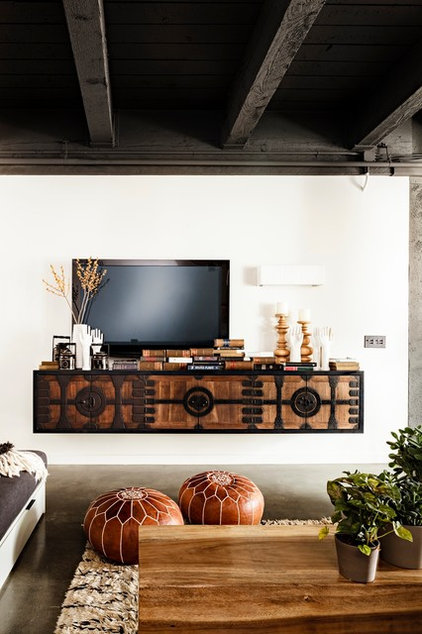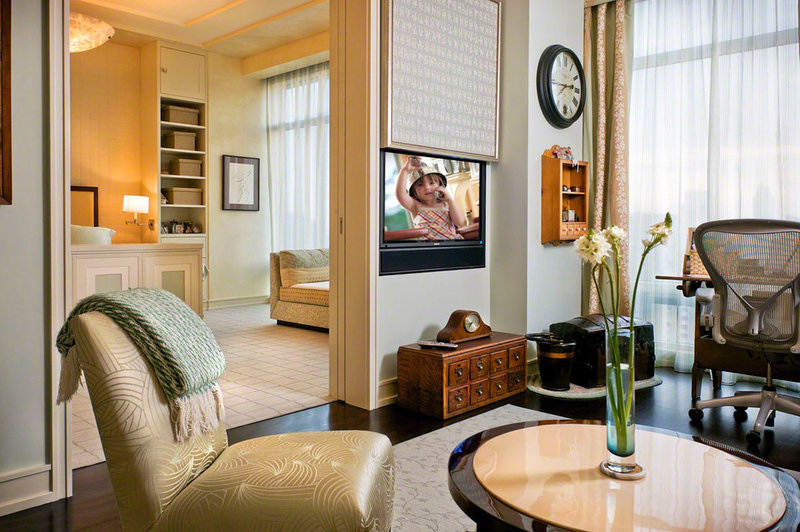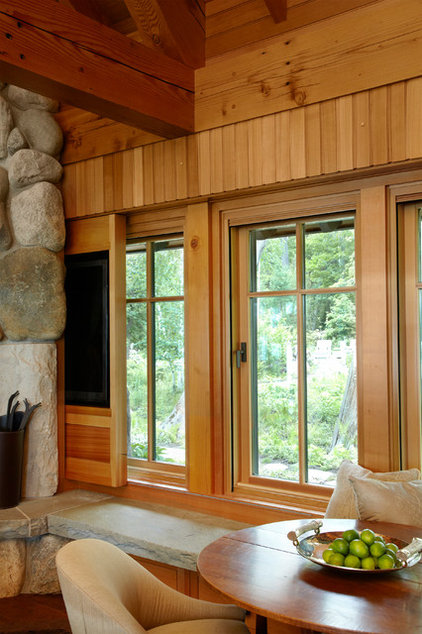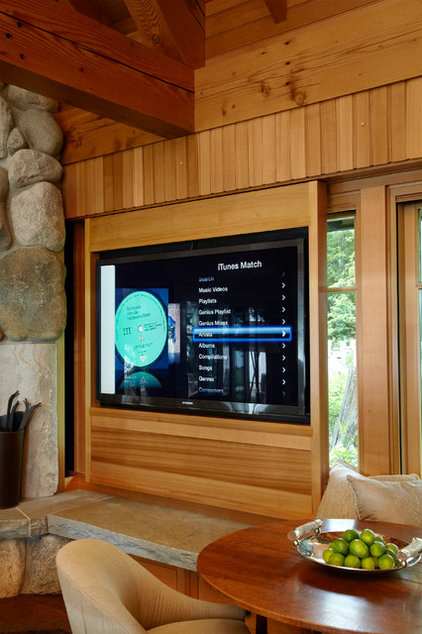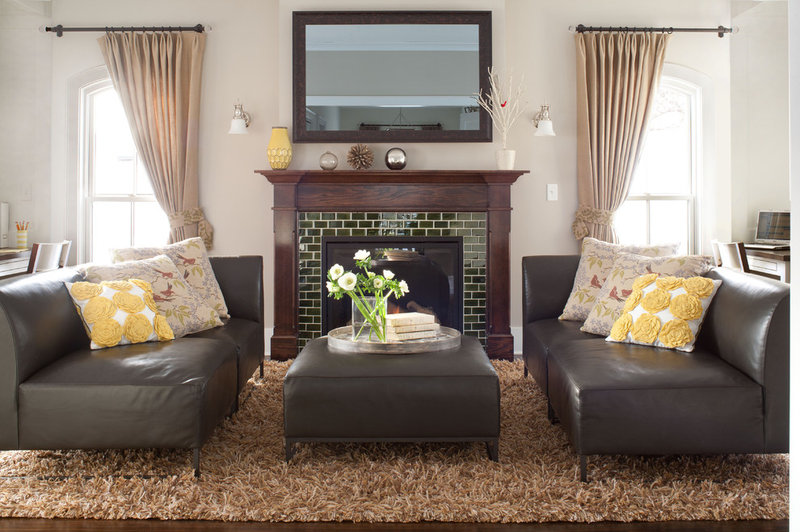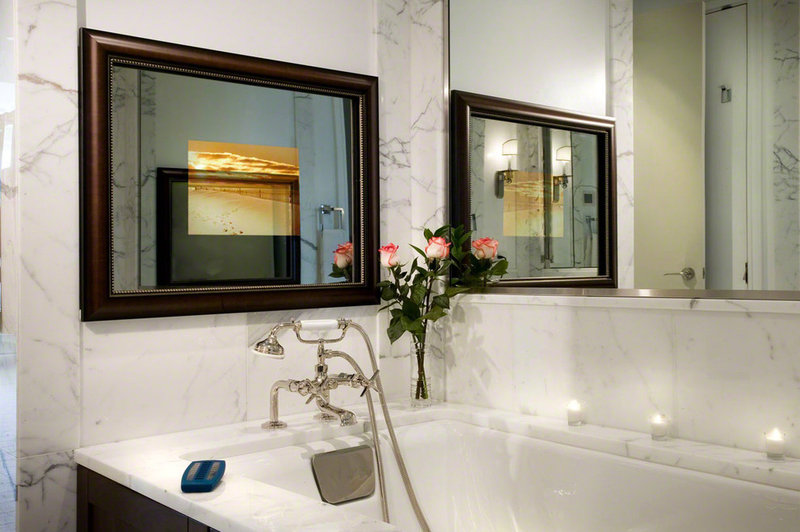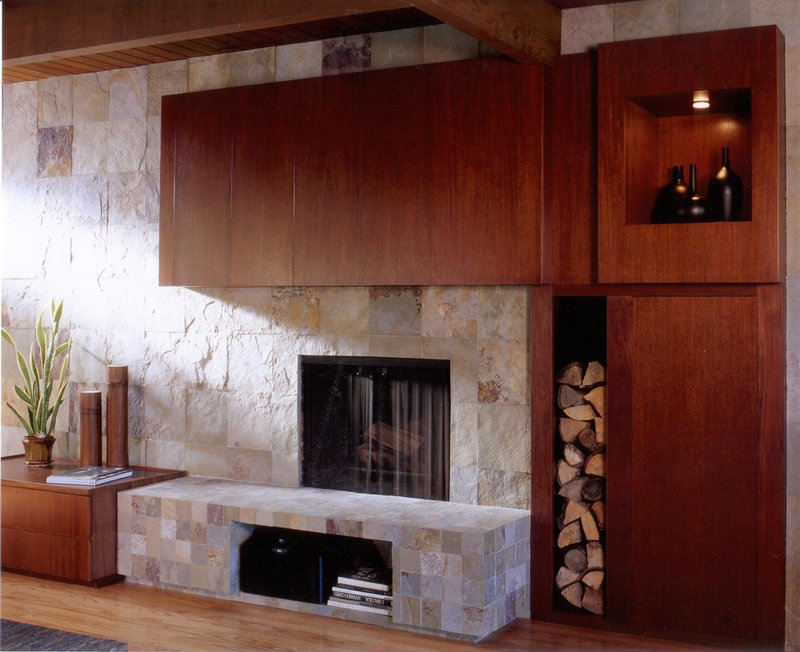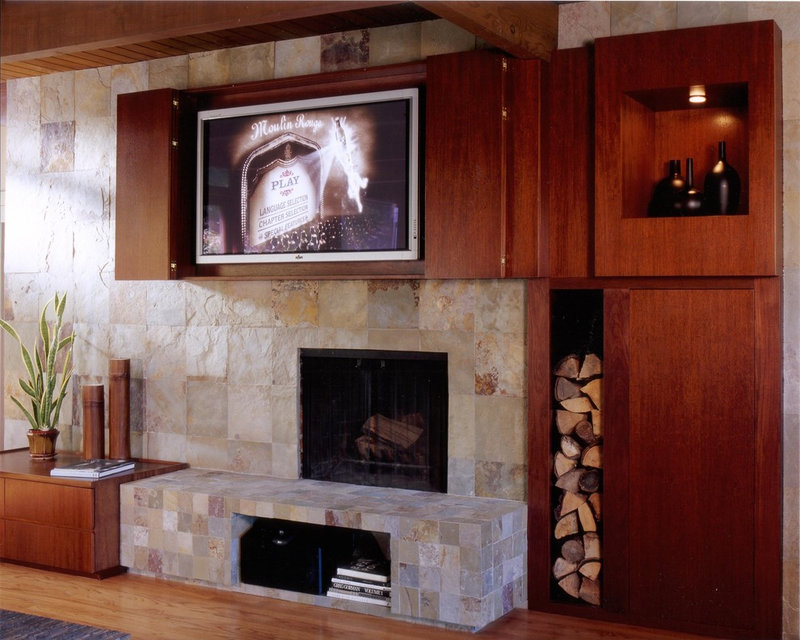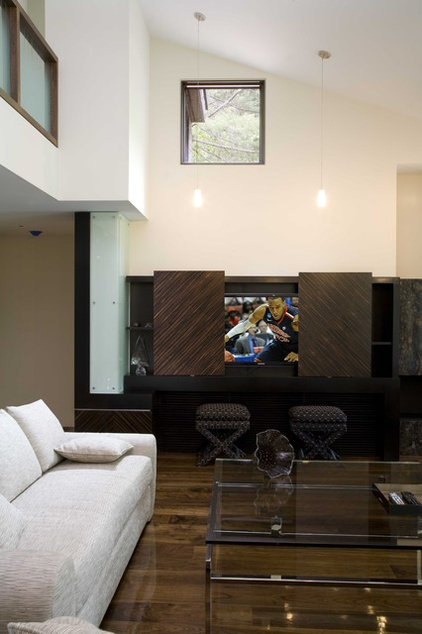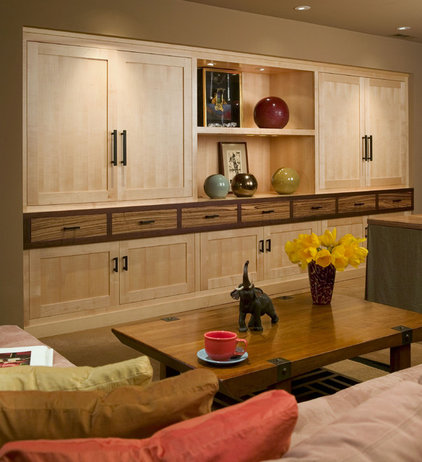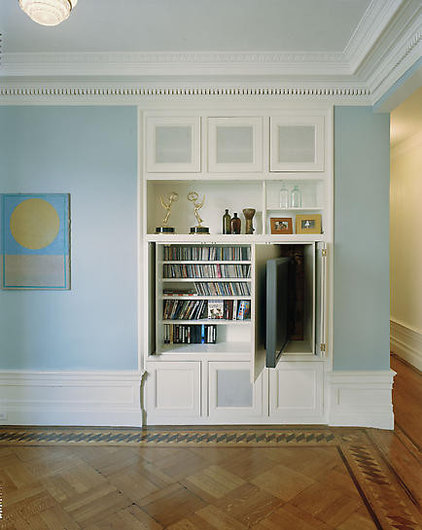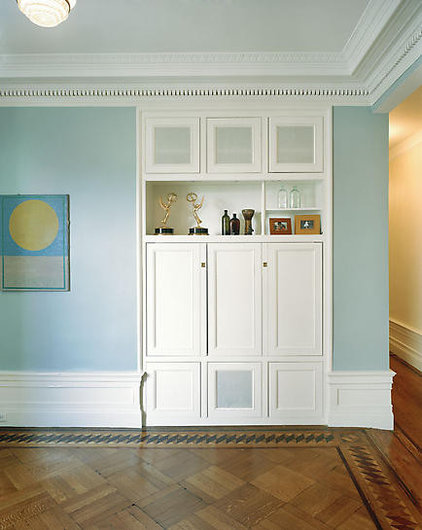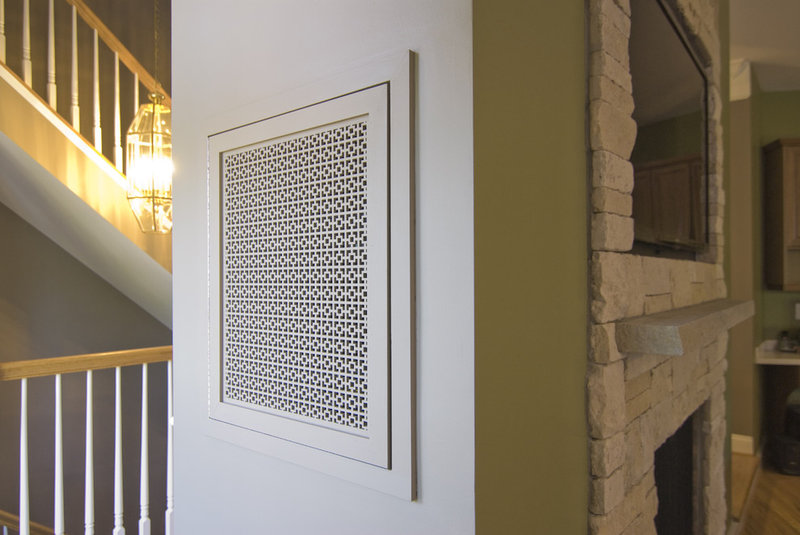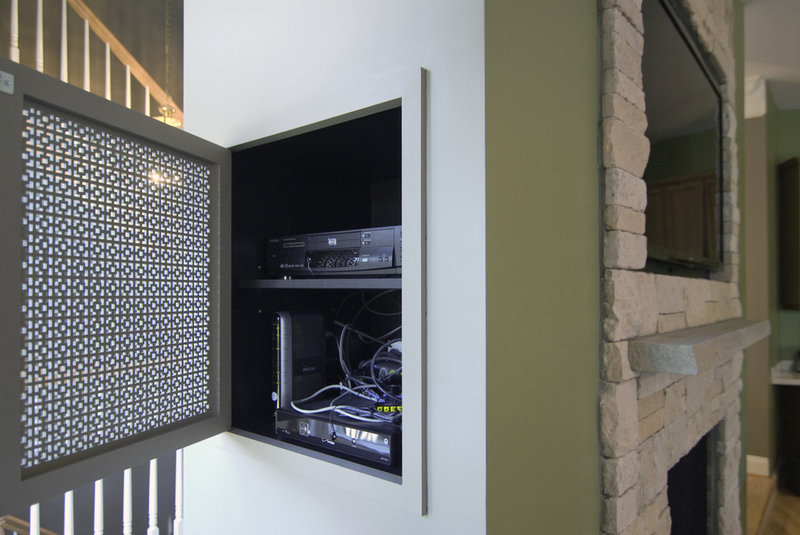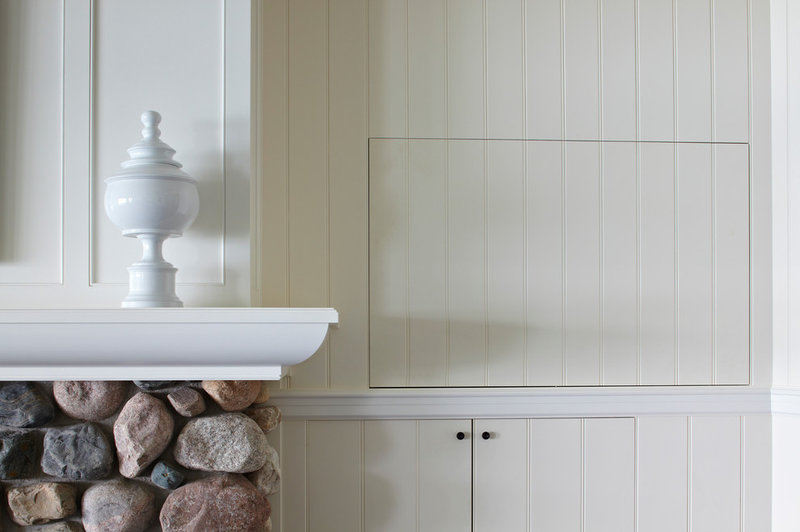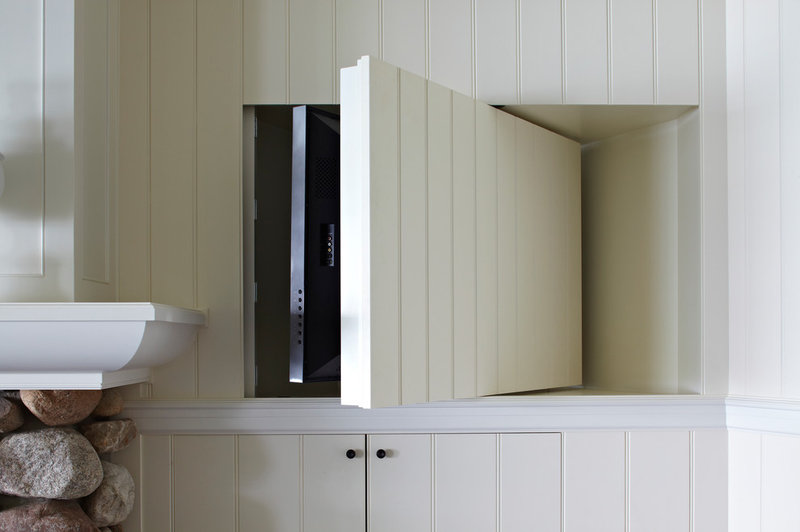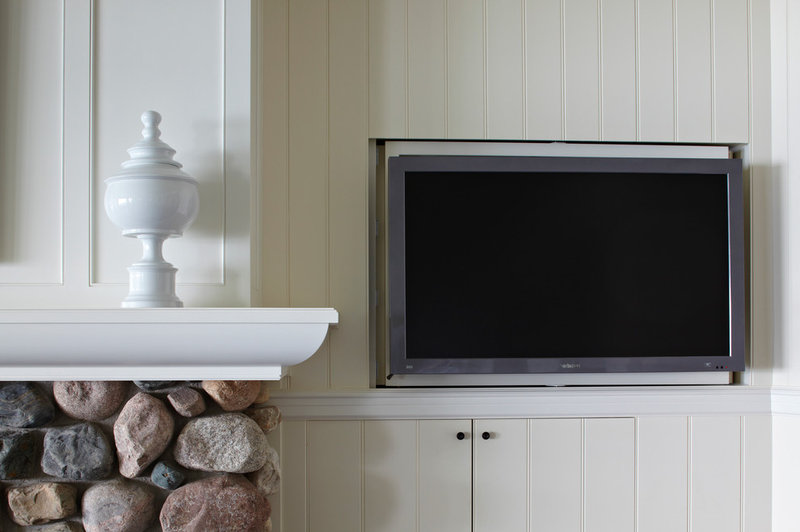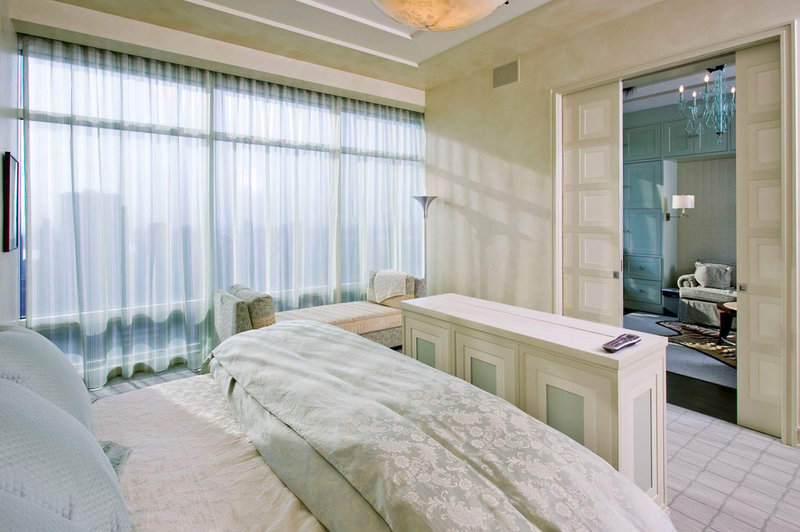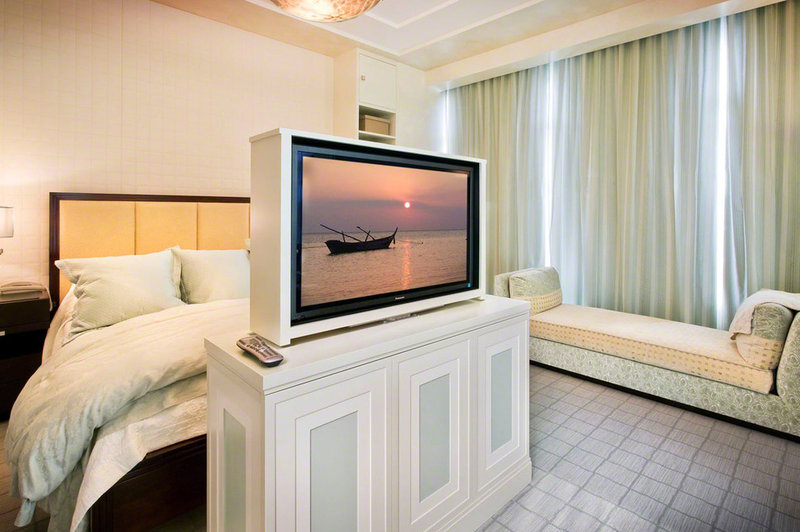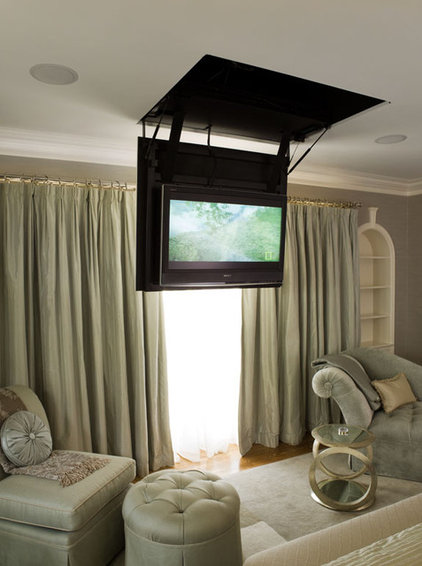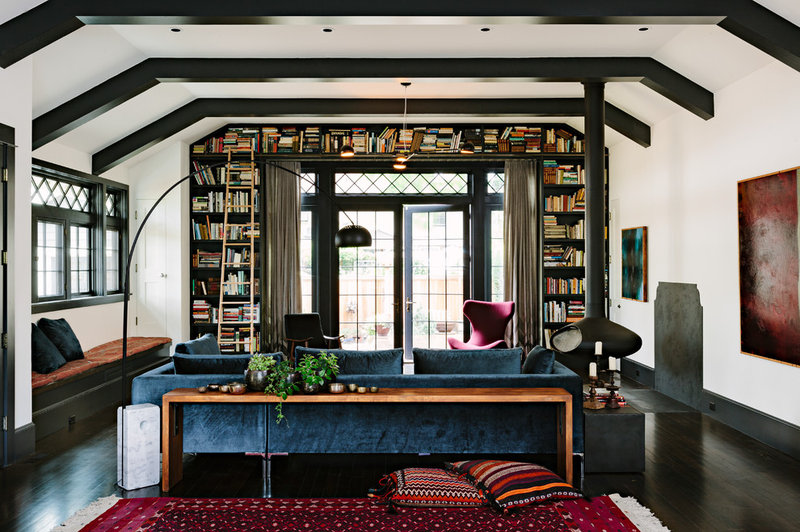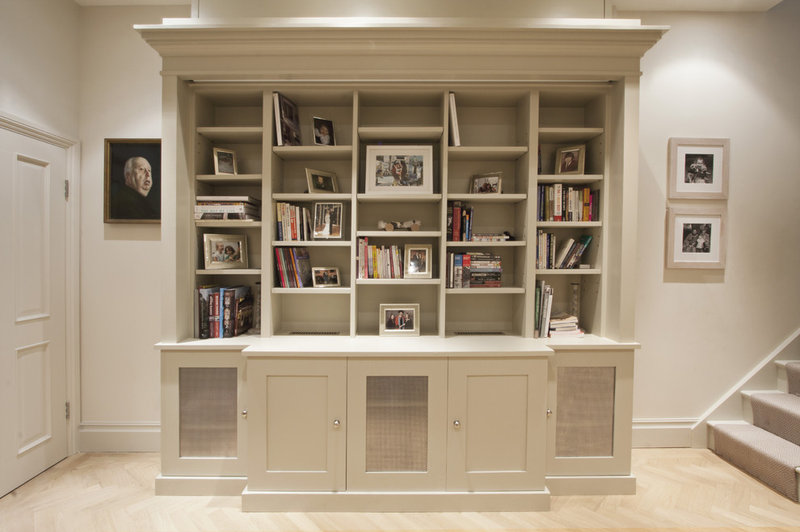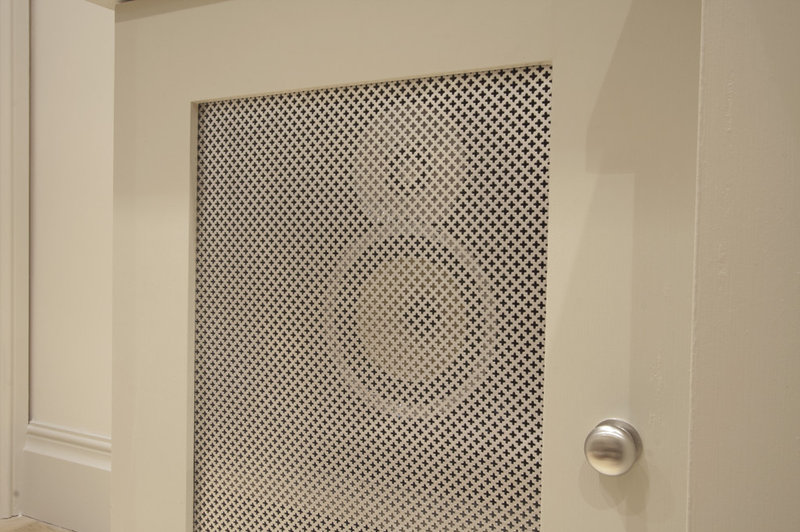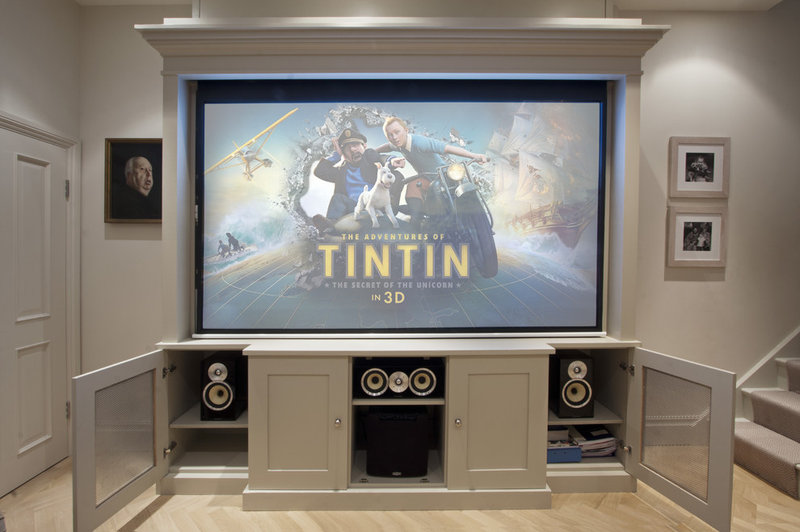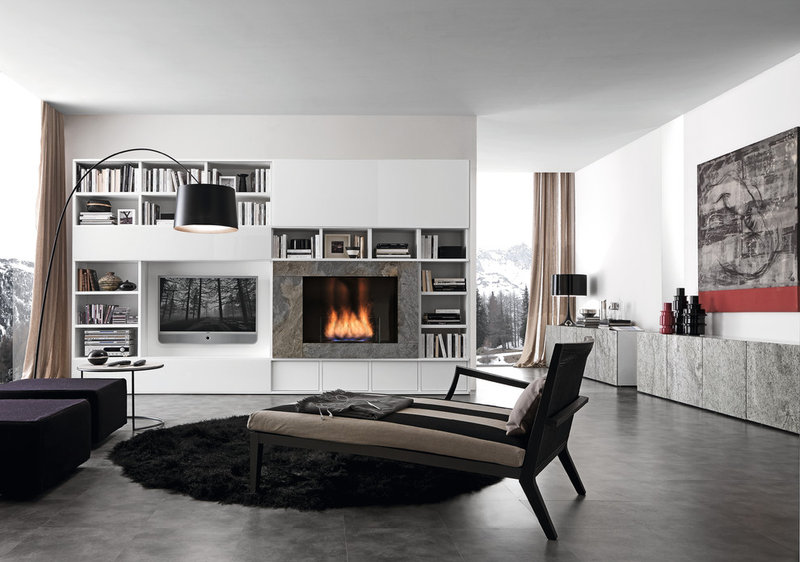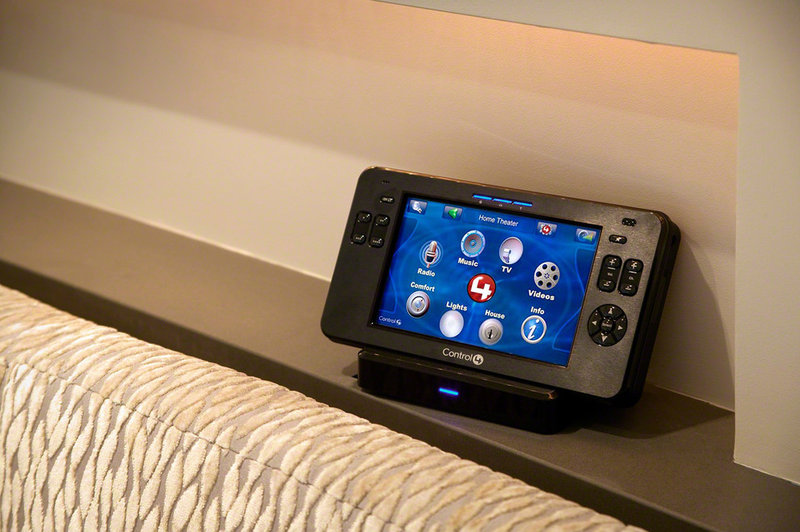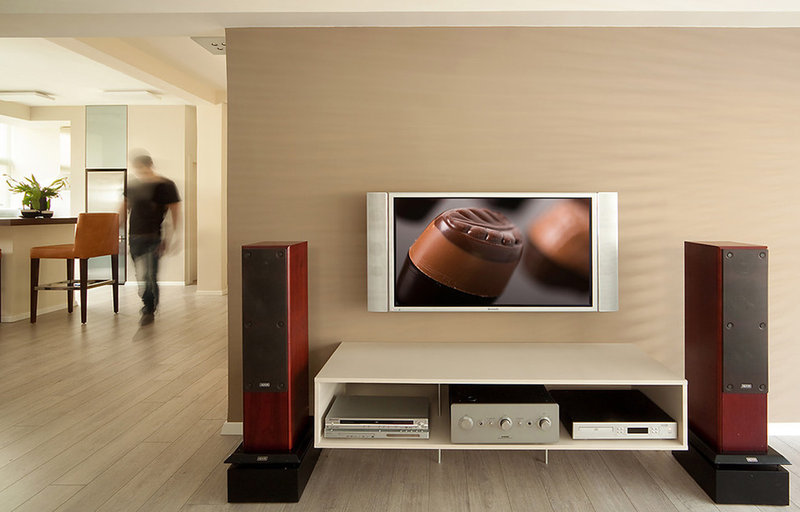Its easy to be discreet when you’ve got cabinets, panels and high-tech TV hiders like these
TV placement has become a lot more discreet since the days of the bulky set with rabbit ears. Nowadays people are hiding their flat-panel screens in walls, ceilings or consoles. And while antennae and Pong (Lord, I’m really showing my age here!) have largely been consigned to history, we now have Blu-ray players, cable boxes, Roku and Wii to contend with. Those need to be stashed out of sight as well.
Where is the line between hooking things up yourself and calling in the professionals? “If a project involves concealed wiring, electrical, wall bracing or a customized remote, it’s best to have a pro do it,” advises Bob Gullo of The Electronics Design Group. Architectural designer Leigha Heydt adds that there are simpler ways to hide the cable box or DVD player without an extensive smart home program, because some cable boxes are now wireless, and components like DVD players have infrared remotes that can go right through walls.
Here are some of the latest methods for integrating the TV and media components into the room or hiding them completely.
The clients wanted a good spot to place “Megatron,” their flat-panel TV, in this room. The clever designers over at
Jessica Helgerson Interior Design found a great way to keep it from overwhelming the wall, while hiding the components. They designed a custom floating console with antique doors. The console stands up to the scale of the white wall and keeps the unsightly cable box, DVD player and other components out of sight.
This room can go from formal living room to casual TV room with the push of a button. The experts at
The Electronics Design Group set it up so when the TV power button is pushed, the art panel slides up to reveal the TV or down to conceal it.
A stunning fieldstone fireplace dominates the interior of this relaxing cabin. To make sure it doesn’t compete with the TV, the screen was hidden beside the chimney.
When it’s time for movie night, the TV simply slides out and covers the window.
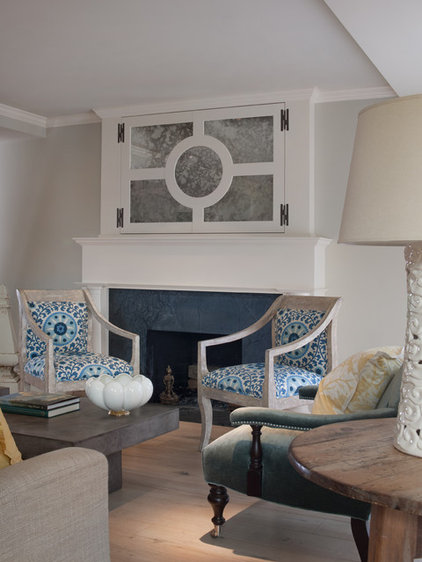
The TV-over-the-fireplace debate was settled here with a compromise: The mirrored doors simply open on hinges to reveal the screen.
The homeowner runs an upscale audiovisual company, so the TV is connected to centralized equipment stored in a closet under the living room stairs. Signals are piped through a high-end smart-home system, called Crestron, to TVs and speakers throughout the house.
The mirror over this fireplace doesn’t conceal the TV — it becomes the TV when the power is turned on.
Mirrors that transform into TVs are also a great option when you want to relax and watch Nashville in the tub.
This beautiful set of built-ins extends beyond the TV area to become an overall design element in the room. The area to the right features a cabinet for components and a spot for stacking logs.
The doors fold open to reveal the TV.
Similarly, sliding doors can conceal this TV in an instant. Covering the TV really changes the entire vibe of a room, taking it from casual to more sophisticated.
These recessed built-in bookshelves have a seamless look that not only conceals all of the media equipment but also toys, books, china, board games, linens and whatever else needs stashing. Zebrawood accents on the drawers create interesting lines and texture. If you’re installing built-ins like these, have your cabinetmaker coordinate with your electrician or media specialist during the planning stages.
The TV can be tucked away in this custom cabinet with no one the wiser. There is plenty of storage here for the DVD collection as well.
Perforated doors provide the required ventilation for components.
Speaking of ventilation for components, it’s important for safety and worth consulting a professional about that. “We typically calculate a BTU rating of the equipment, and depending on the circumstances, either have exhaust fans, vented doors or an otherwise conditioned space,” Gullo says.
This perforated door not only hides the components for the wall-mounted TV; it assures proper ventilation and adds an interesting architectural detail.
The TV is hidden right in the wall in this room.
The paneling swivels around to reveal the TV. This approach requires a niche deep enough for the board to rotate all the way around.
The TV is housed in a cabinet when not in use and also swivels 180 degrees, so it can be viewed from different spots in the room. You can have cabinets made to coordinate with the architecture and style of your home.
Another way to conceal the TV in the bedroom is in the ceiling. This set flips up and out of sight when not in use.
A similar system is in place in this home. The window seat on the left side of the room contains a TV and all of its components. The push of a button brings the TV up on an automated lift.
At first glance this set of built-ins looks like it’s just for books and family photos.
But the screened door panels are hiding some big surround sound.
With the push of a button, a large screen comes down and transforms the space into a screening room.
I want to congratulate this photo stylist for making me have to squint to find the TV on this wall. I always enjoy seeing which
images people choose to put on the TV when photographing a room.
As for universal remotes, there are a lot of options out there. “Some are Wi-Fi, some are RF, some IR, some are ZigBee. … It runs the gamut depending on manufacturer,” Gullo says. Sounds like something this Luddite will definitely need to consult the pros about.
Find a local media specialist
Of course, like Elvis at Graceland, some of us just embrace the TV and feel no need to hide it. When it looks as sleek as this, the TV actually become a design element in the room.
This brings me to a few questions for you Houzz readers: How important is it for you to hide a TV? How many TVs do you have in your house, and which rooms are they in? If you do conceal any of them, how do you do it?
Thomas Lumber Company is one of Atlanta’s oldest and largest lumber mills. We are 4 generations of the same family ownership operating out of the same Cumming, Ga location started by George Thomas in 1927. Call us for your Western Red Cedar, Ipe Decking, Cypress, Pine Lumber, Kamado Joe Grills, Primo Grills, Dekor Outdoor Lighting Products, and any decking or home accessory. Let one of our professionals help you achieve the desired results you are looking for.


